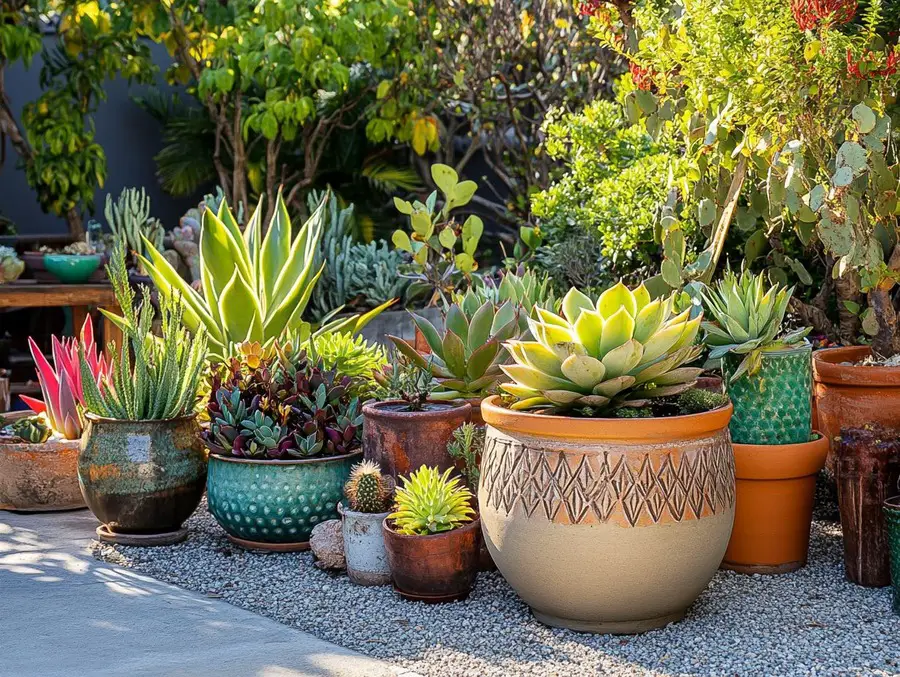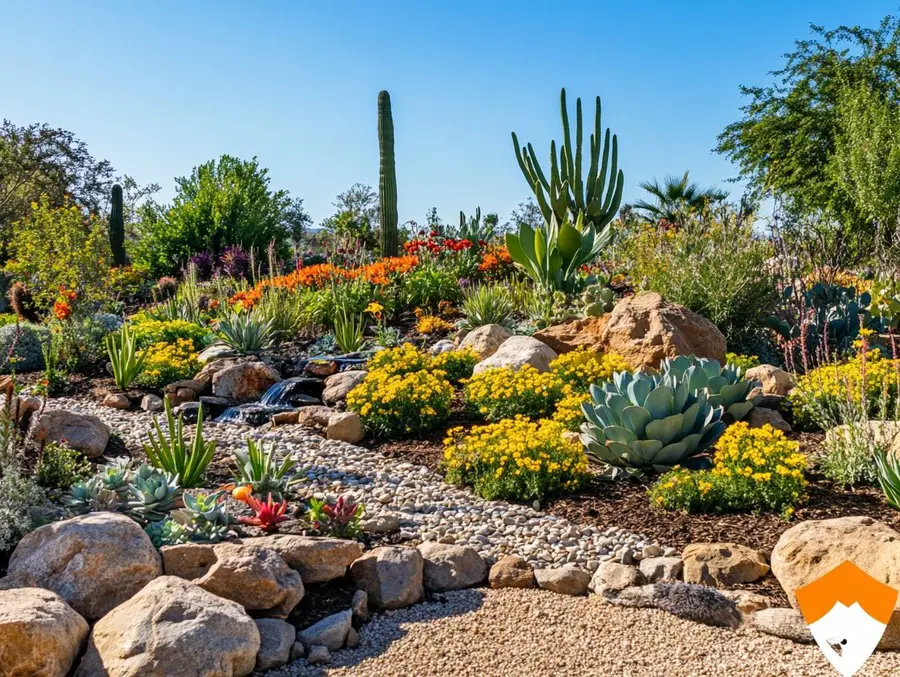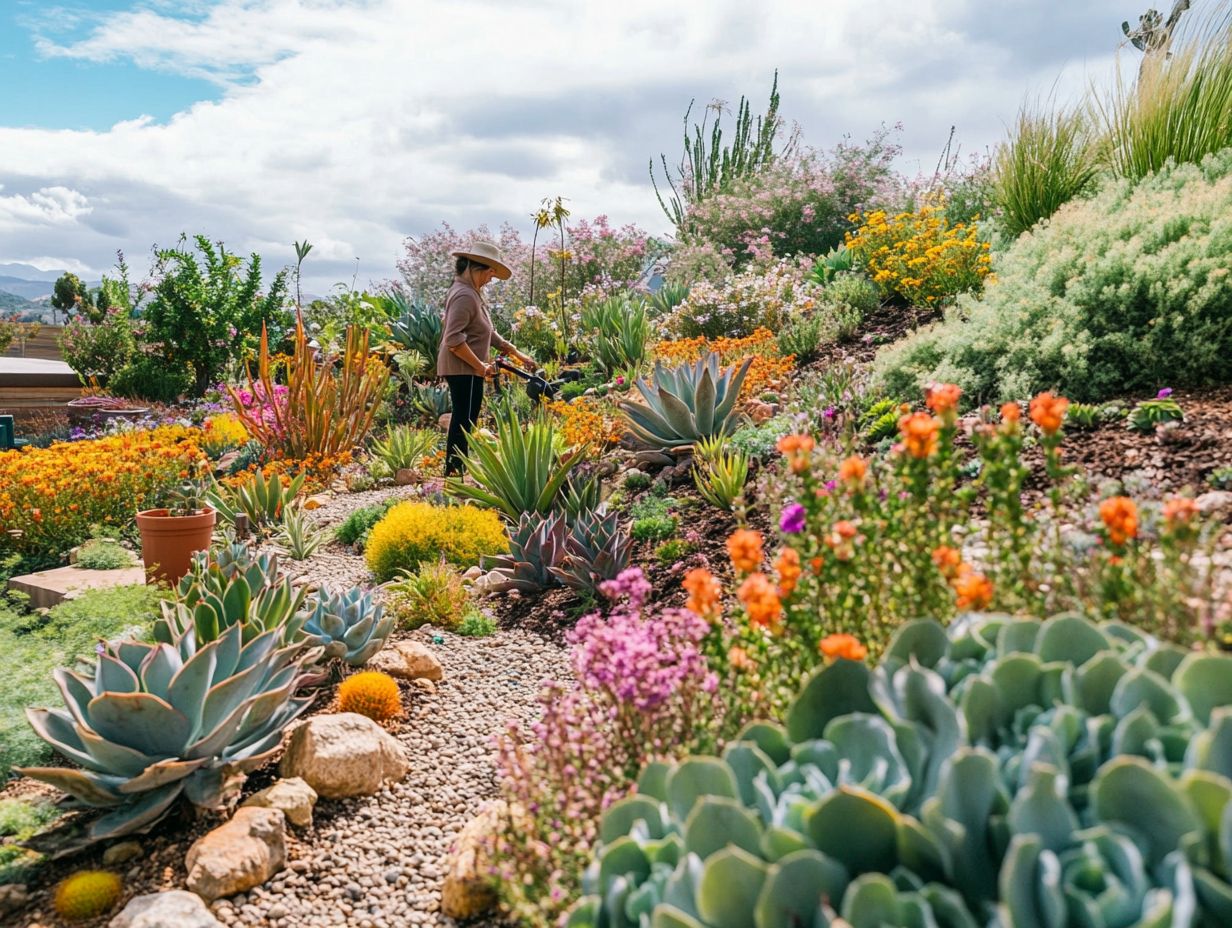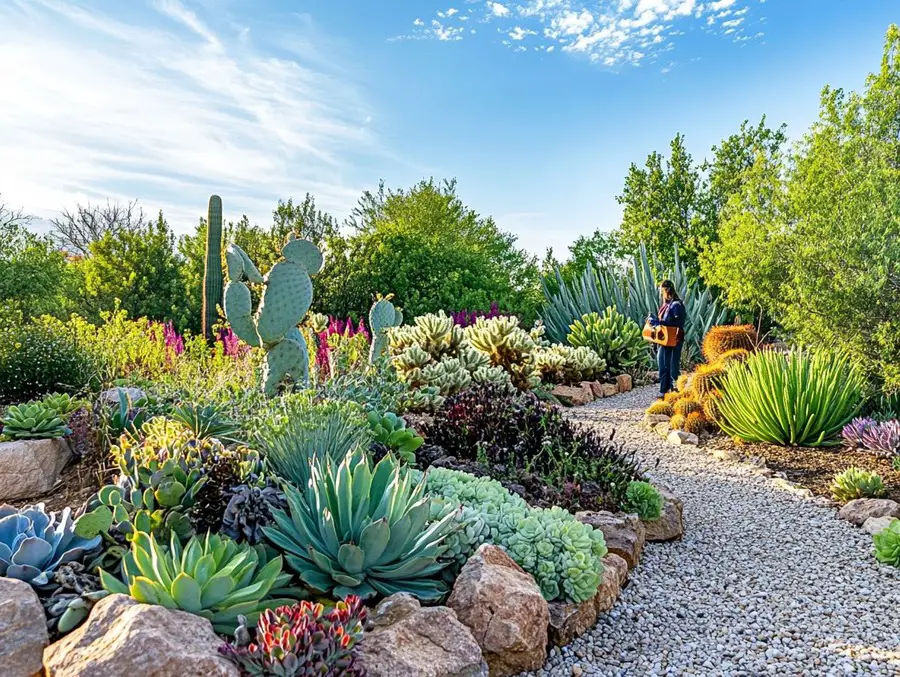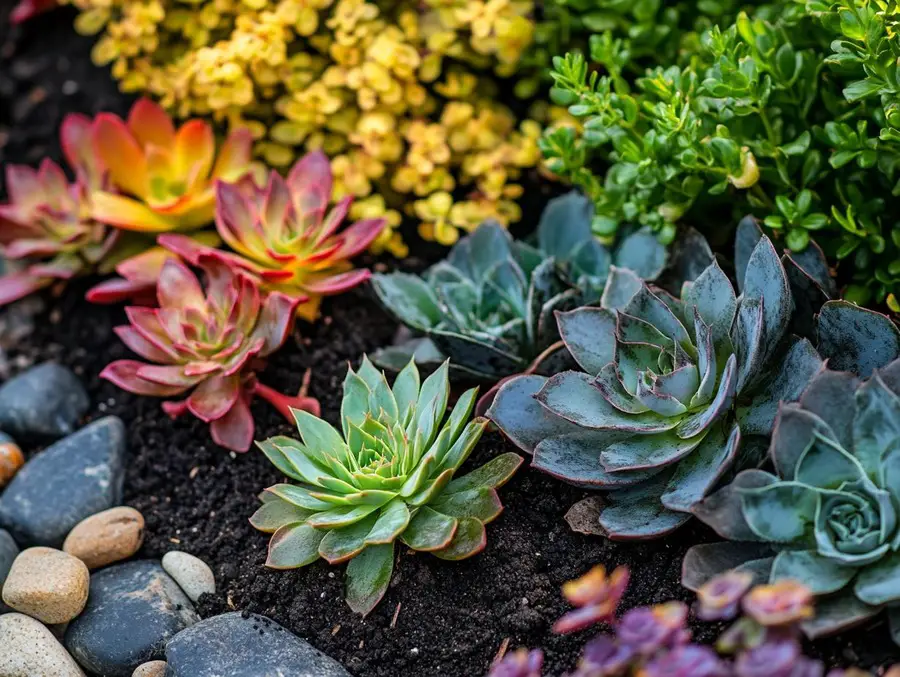We use affiliate links. If you purchase something using one of these links, we may receive compensation or commission.
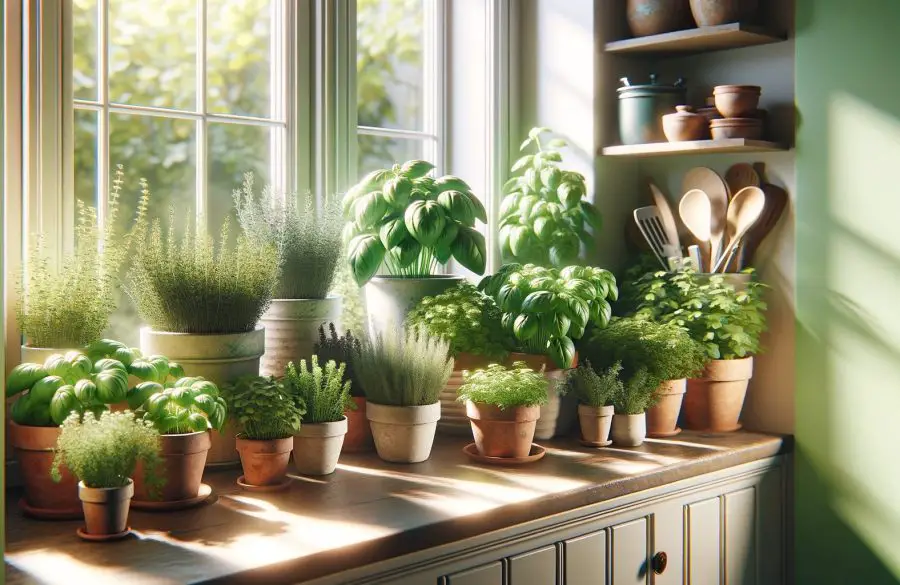
Discover the joys of a windowsill herb garden! Our guide makes it easy to grow, care for, and enjoy fresh herbs right from your sunny windowsill.
Windowsill Herb Garden Key Takeaways:
- Windowsill herb gardens are an easy way to grow herbs like basil, thyme, and parsley indoors.
- They require a sunny windowsill, regular watering, and routine pruning.
- This simple setup brings fresh flavors to your kitchen and adds a touch of nature to your home.
Imagine snipping fresh basil or parsley right from your kitchen window!
Our guide on creating a windowsill herb garden will turn your kitchen into a mini green oasis.
Let’s dive into the simple steps to grow your favorite herbs, adding a dash of flavor and greenery to your home!
Windowsill Herb Gardens: Fresh Flavors at Your Fingertips
Nothing beats the convenience and joy of snipping fresh herbs right from your own windowsill.
Whether you’re a culinary enthusiast or simply love the idea of homegrown greens, a windowsill herb garden is a delightful addition to any kitchen.
Not only does it bring a burst of nature indoors, but it also offers a constant supply of fresh herbs to elevate your cooking.
In this comprehensive guide, we’ll explore how to create and maintain a flourishing windowsill herb garden, no matter the size of your space.
From basil to parsley, your culinary adventures are about to get a whole lot more flavorful!
Benefits of a Windowsill Herb Garden
Imagine having a mini garden within arm’s reach while you cook. Windowsill herb gardens are not just about the convenience of fresh herbs; they also add a refreshing touch of greenery to your kitchen.
Plus, growing your own herbs can be surprisingly cost-effective compared to buying them from the store.
Choosing the Right Location
The key to a successful herb garden is finding the right spot. Herbs love sunlight, so a windowsill that receives at least 6 hours of sun daily is ideal.
Lack of enough sunshine can result in weak, flavorless plants.
An east or south-facing window usually works best. Remember, if your herbs start getting tall and leggy, they might need more sun.
In such cases, consider adding a grow light to supplement natural sunlight.
Selecting Suitable Herbs for Your Garden
When choosing herbs for your windowsill garden, think about the herbs you use most in your cooking.
Basil, parsley, chives, rosemary, and thyme are all excellent choices for indoor growing.
Some herbs, like basil and parsley, prefer lots of sun, while others like mint can thrive in less light.
Key Takeaways for a Windowsill Herb Garden
- A windowsill herb garden brings both culinary and aesthetic benefits.
- Choose a sunny spot for your herb garden to ensure healthy growth.
- Select herbs that match your cooking needs and sunlight availability.
Buying a Herb Garden Kit to Get Started
Starting a windowsill herb garden can be a fun and rewarding experience, especially for those new to gardening or with limited space.
One of the simplest ways to begin is by purchasing a herb garden kit.
These kits provide everything you need to start growing herbs right on your windowsill, making the process straightforward and enjoyable.
Let’s explore why an herb garden kit might be the perfect option for you and what to look for when buying one.
Ease and Convenience
- All-in-One Solution: Herb garden kits typically include seeds or seedlings, soil, and pots or containers. This takes the guesswork out of starting your garden, as you have all the necessary components in one package.
- Perfect for Beginners: If you’re new to gardening, a kit offers a guided introduction. Instructions are usually included, ensuring you have the knowledge to care for your herbs successfully.
What to Look for in a Herb Garden Kit
- Quality of Seeds or Seedlings: Ensure the kit comes with high-quality, non-GMO seeds or healthy seedlings. This will set you up for a more successful and fruitful garden.
- Suitable Containers: The kit should have containers with adequate drainage. This is crucial for the health of your herbs, as poor drainage can lead to root rot.
- Type of Herbs Included: Choose a kit that includes the herbs you’re most likely to use in your cooking. Common options are basil, parsley, chives, and cilantro, but there are many other varieties to explore.
- Instructional Support: Good kits come with clear, detailed instructions on planting, watering, and caring for your herbs. This is particularly important for those who are new to gardening.
Where to Buy
Herb garden kits are widely available online on Amazon and in stores. Be sure to read reviews and compare kits to find the one that best suits your needs and windowsill conditions.
Starting with a herb garden kit is a great way to dip your toes into the world of gardening.
It’s a hassle-free, educational, and enjoyable way to grow your own herbs, adding fresh flavors and greenery to your home.
The AeroGarden Harvest: Grow Herbs Anywhere, Window or Not
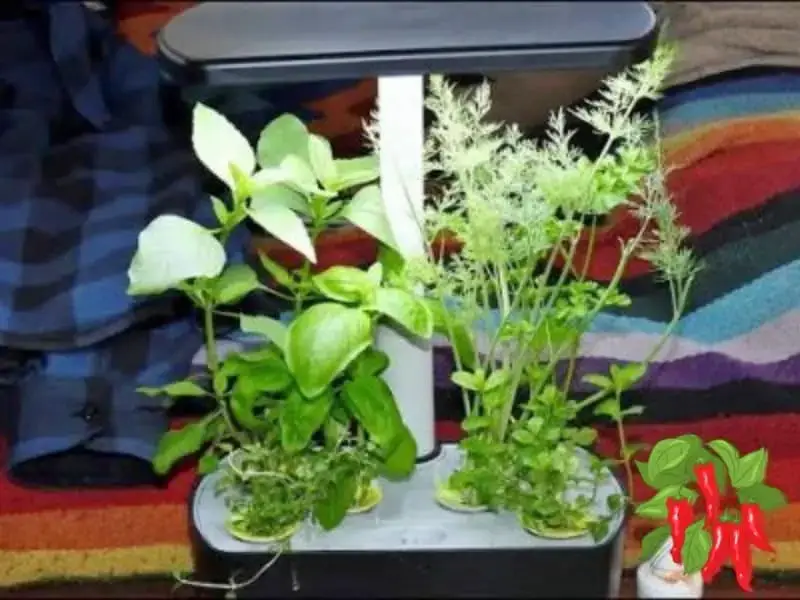
I use the AeroGarden Harvest to grow herbs on my coffee table away from any windows. The built-in light comes in handy.
If you’re interested in growing herbs but lack the necessary windowsill space or sunlight, the AeroGarden Harvest is an innovative solution that can transform any part of your home into a lush herb garden.
This section will explore the features and benefits of the AeroGarden Harvest, demonstrating how it enables you to grow herbs effortlessly on a countertop, in a room without windows, or in any indoor space.
What is the AeroGarden Harvest?
- High-Tech Indoor Garden: The AeroGarden Harvest is a compact, hydroponic indoor garden system. It allows you to grow herbs (and other plants) in water, without soil, using a nutrient-rich solution.
- Built-In Grow Lights: Equipped with LED grow lights, it provides the necessary light spectrum for plant growth, compensating for the lack of natural sunlight. This feature makes it perfect for rooms without windows.
- It’s automated: Everything runs on a timer so all you have to do is remember to add more water and nutrients when the light blinks. Anyone can be successful. No green thumb is needed.
Benefits of Using the AeroGarden Harvest
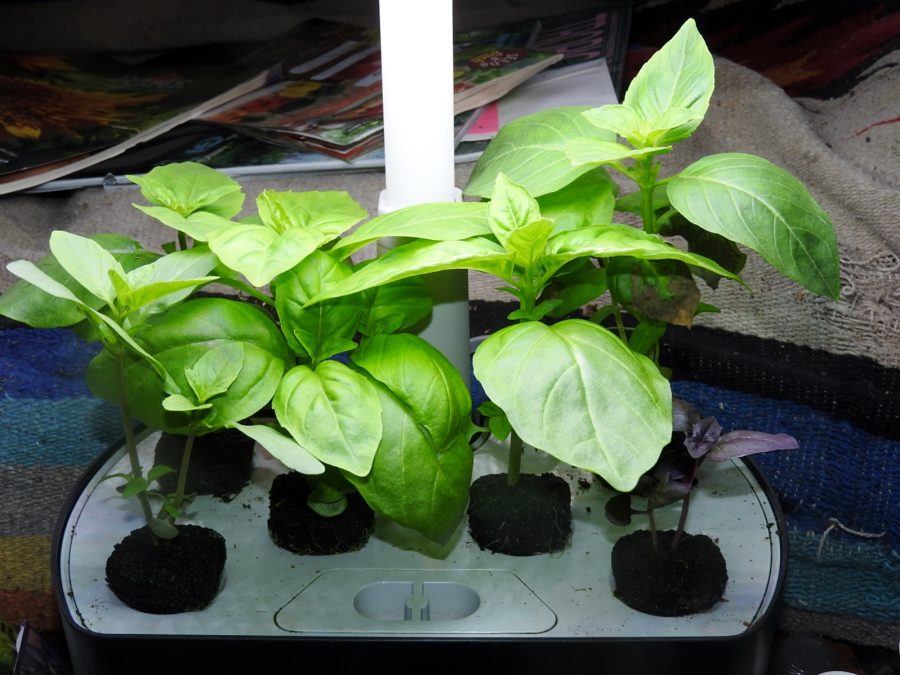
- Grow Herbs Anywhere: With its self-contained lighting and water system, you can set up the AeroGarden Harvest on any countertop or indoor space, regardless of natural light availability.
- Easy to Use: The system is designed for simplicity. It tells you when to add water and nutrients, taking the guesswork out of growing herbs.
- Year-Round Harvest: Enjoy fresh herbs throughout the year, regardless of the season or outdoor weather conditions.
Ideal for Urban Dwellers
- Space-Saving: The compact size of the AeroGarden Harvest is ideal for apartments, small kitchens, or homes with limited outdoor space.
- Clean and Mess-Free: As it uses hydroponics, there’s no soil involved, making it a clean and tidy option for indoor gardening.
Types of Herbs You Can Grow
The AeroGarden Harvest is versatile, allowing you to grow a variety of herbs, including basil, parsley, thyme, dill, mint, and more.
The system usually comes with a herb seed pod kit to get you started immediately.
You can also grow a wide variety of greens like lettuce or spinach and patio tomatoes and peppers
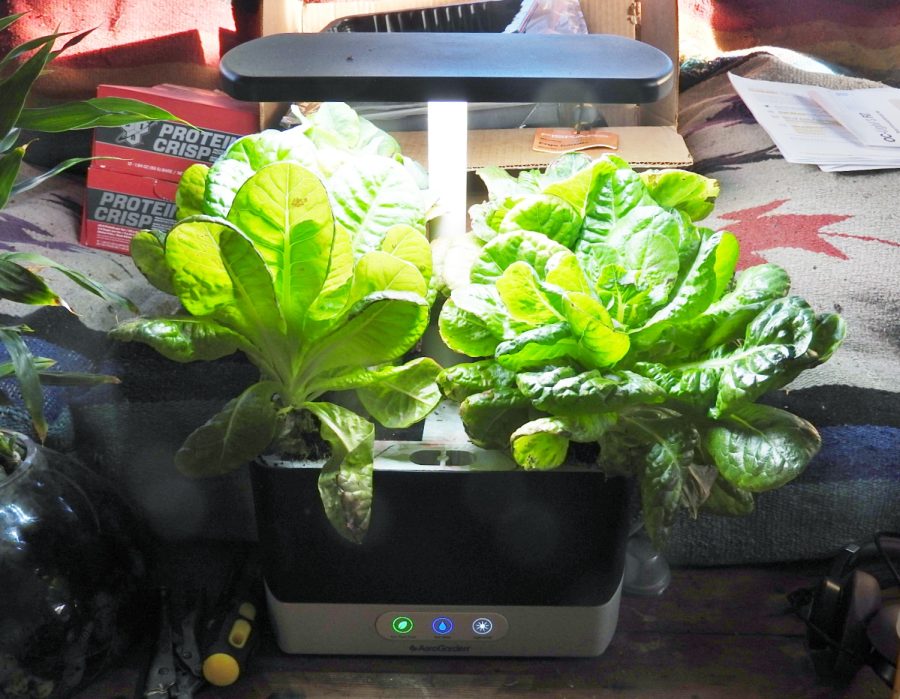
Final Thoughts on the AeroGarden Harvest
The AeroGarden Harvest is a fantastic option for those who want to enjoy homegrown herbs but face constraints like lack of space or insufficient sunlight.
It’s a testament to how modern technology can bring the joy of gardening into any home, making the process accessible, simple, and enjoyable.
Setting Up Your Garden
Now that you’ve selected your herbs and the perfect spot, it’s time to set up your garden.
Selecting Containers and Soil
Your choice of containers is crucial. Opt for pots with good drainage holes to prevent waterlogging, which can harm the herbs.
A saucer beneath each pot will help protect your windowsill from water damage.
As for soil, use a quality potting mix that drains well. I recommend using a 75% coco coir and 25% mix.
It drains well and roots love growing in it. It also is a sustainable and reusable medium while peat-based soils are not.
Overly dense garden soil can lead to problems like root rot.
Planting and Initial Care
Begin by placing a layer of potting mix in your container. Gently loosen the roots of your herb plant before placing it in the pot, then cover it with more soil, leaving space at the top for watering. Water immediately after planting and ensure the soil is always moist but not soggy.
Caring for Your Windowsill Herb Garden
Proper care is essential for a thriving herb garden.
Watering and Fertilizing
Be mindful of watering; herbs don’t like to be too wet.
Stick your finger into the soil; if it feels dry, it’s time to water.
When it comes to fertilizing, less is more.
Over-fertilizing can harm the flavor of your herbs. Consider using organic herb food spikes for easy and controlled nutrition.
Pruning and Harvesting
Regular harvesting encourages bushy growth and more yield. However, never trim more than one-third of the plant’s foliage at a time, as this can stress the plant.
Troubleshooting Common Issues
Even the most well-maintained herb garden can face issues.
Dealing with Pests and Diseases
Common pests like fungus gnats prefer moist soil, so allowing the soil to dry out a bit between watering can prevent infestations.
You can use safe pest control methods like insecticidal soap or neem oil for aphids, spider mites, or mealy bugs.
Addressing Light and Watering Problems
If your herbs are not thriving, they might need more light or less water. Adjust their position or watering schedule accordingly.
If low light is the issue (leggy growth) move them to a brighter location or use supplemental lighting.
Preserving Your Harvest
If you’ve got an abundance of herbs, consider preserving them.
Freezing herbs in olive oil using ice cube trays is an excellent way to keep them for longer. You can also dry herbs for future use.
Creating and maintaining a windowsill herb garden is a rewarding experience that enhances both your kitchen and your meals.
With these tips and tricks, you’re well on your way to enjoying fresh, homegrown herbs year-round.
FAQs About Windowsill Herb Gardens
Starting on the journey of growing a windowsill herb garden can bring up many questions, especially if you’re new to indoor gardening.
To help you get the best out of your herb garden, we’ve compiled a list of frequently asked questions and their answers.
Whether you’re wondering about the ideal window for your herbs, watering schedules, or sun preferences, we’ve got you covered!
Q: Can you grow herbs on your windowsill?
A: Yes, you can grow herbs on your windowsill. It’s a convenient and efficient way to have fresh herbs readily available. Most kitchen herbs like basil, parsley, and thyme thrive in windowsill gardens.
Q: What is the best window for a herb garden?
A: The best window for a herb garden is typically a south-facing window as it provides the most sunlight throughout the day.
However, east-facing windows that get plenty of morning sun are also suitable. The key is ensuring your herbs get enough light.
Q: How often do you water windowsill herbs?
A: Watering frequency for windowsill herbs depends on the herb type and the conditions of your home.
A general rule is to water when the top inch of the soil feels dry.
Overwatering can be detrimental, so ensure good drainage and avoid letting the herbs sit in water.
Q: How do you maintain a window herb garden?
A: To maintain a window herb garden, provide sufficient sunlight, and water appropriately, and prune regularly.
Each herb may have specific needs, so it’s important to understand the requirements of the herbs you are growing.
Regular harvesting encourages growth and prevents the plants from becoming leggy.
Q: Do herbs prefer full sun or shade?
A: Most herbs prefer full sun, which means they thrive in a spot that receives at least 6 hours of direct sunlight daily.
However, some herbs like parsley and mint can tolerate partial shade. You can always add an LED grow light if you need more light.
Q: What are the best herbs for a windowsill garden?
A: Ideal herbs for a windowsill garden include basil, parsley, chives, thyme, and rosemary. These herbs are generally easy to grow and are used frequently in cooking.
Q: Can I start my windowsill herb garden from seeds?
A: Yes, you can start a windowsill herb garden from seeds, though it requires more patience as they take time to germinate and grow.
For quicker results, you can start with seedlings or small plants from a nursery.
Q: How do I prevent pests in my windowsill herb garden?
A: To prevent pests, keep your garden clean, ensure proper air circulation, and avoid overwatering.
If pests do appear, use organic pest control methods like neem oil or insecticidal soap.
The Joys and Benefits of a Windowsill Herb Garden
As we wrap up our journey through the world of windowsill herb gardening, it’s clear that this endeavor is more than just planting and harvesting.
It’s about bringing a piece of nature into your home, enjoying fresh flavors in your cooking, and experiencing the satisfaction of nurturing something with your own hands.
Below are key takeaways and final thoughts to inspire and guide you in your windowsill gardening adventure.
The Culinary Delights of Fresh Herbs
- Elevating Your Cooking: Fresh herbs from your windowsill garden can transform ordinary dishes into culinary masterpieces.
- Health Benefits: Beyond flavor, herbs are packed with vitamins and antioxidants, contributing to a healthier diet.
Aesthetic and Emotional Benefits
- Adding Greenery to Your Space: Herbs are not only functional but also add beauty and a sense of tranquility to your home.
- Therapeutic Qualities: Gardening, even on a small scale like a windowsill, can be a stress-relieving and rewarding hobby.
Environmental Impact and Sustainability
- Eco-Friendly Gardening: Growing your own herbs can reduce your carbon footprint and promote sustainable living practices.
- Reduction in Food Waste: By harvesting only what you need, you reduce the waste often associated with store-bought herbs.
Continuous Learning and Adaptation
- The Learning Curve: Embrace the journey of learning about different herbs and their specific needs.
- Adapting to Challenges: Over time, you’ll become adept at troubleshooting and adapting to the unique challenges of windowsill gardening.
Windowsill Herb Garden Final Thoughts
Your windowsill herb garden is more than just a collection of plants; it’s a reflection of your care, attention, and culinary passion.
Whether you’re a seasoned gardener or a beginner, the world of windowsill herbs offers endless possibilities for growth, enjoyment, and culinary exploration.
So, go ahead, plant those seeds of inspiration, and watch as your windowsill transforms into a haven of greenery and flavor.
Related Content
Visit my Amazon Influencer Page for videos and gardening products Grow Your Own Garden




